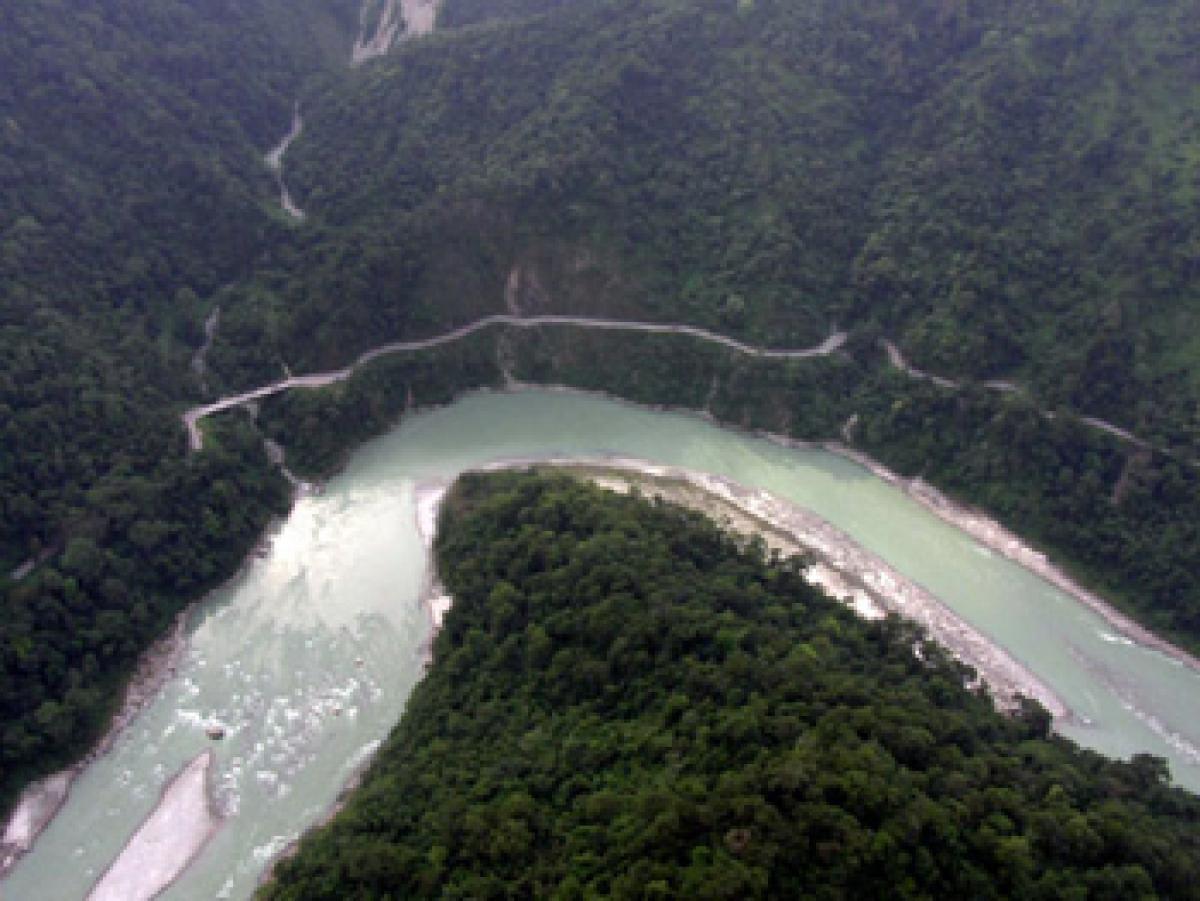Live
- Ahsaas Channaopens up about her complex character in ‘Mismatched 3’
- Radhika Apte welcomes first child, shares heartfelt post
- Jacqueline dazzles at Da-Bangg Reloaded concert
- Time to boost measures to prevent drowning, save children: WHO
- TDP achieves milestone with 73 lakhs membership registration, says Chandrababu
- South Korea: Main Oppn hails Yoon's impeachment motion passage as 'victory for people, democracy'
- RG Kar issue: Tension flared over parallel protests by Congress, SUCI(C) outside CBI offices
- After furore, Central Railway revokes order to raze Lord Hanuman Temple at Dadar
- Now hoteliers' body in Bengal's Alipurduar shut doors for Bangladeshi tourists
- District Collector Encourages Students to Utilize Government Facilities for a Better Future
Just In

Resolving Teesta imbroglio. The logjam over equitable distribution of the Teesta waters has arisen from a Bangladesh proposal of sharing the water available at Gazoldoba barrage in West Bengal on a 50:50 basis, reserving 20 per cent of the overall river water for an environmental flow in order to keep the river in good health.
 It should not be overlooked that Teesta's catchment area is much more in India than what it is in Bangladesh and the total amount of West Bengal's water resources is not that plentiful which can allow 50:50 sharing that Dhaka is demanding
It should not be overlooked that Teesta's catchment area is much more in India than what it is in Bangladesh and the total amount of West Bengal's water resources is not that plentiful which can allow 50:50 sharing that Dhaka is demanding
The logjam over equitable distribution of the Teesta waters has arisen from a Bangladesh proposal of sharing the water available at Gazoldoba barrage in West Bengal on a 50:50 basis, reserving 20 per cent of the overall river water for an environmental flow in order to keep the river in good health.
But if New Delhi ultimately accedes to the Bangladeshi demand, it will be a political decision rather than a technical one as vast areas of north Bengal will be affected and the purpose behind the Teesta Barrage Project in West Bengal, which has already witnessed expenditure of an astronomical amount, may be defeated. On the other hand, it cannot be denied that the northwestern part of Bangladesh is starved of water, that the need of the hour is augmentation of the Teesta water flow at Gazoldoba and some vital corrections in the agricultural pattern that Bangladesh has been following in its Rangpur division.
It should not also be overlooked that Teesta's catchment area is much more in India than what it is in Bangladesh and the total amount of West Bengal's water resources is not that plentiful which can allow the share Dhaka demands. But the Teesta is a trans-boundary river and the interests of Bangladesh must be taken into account while finding a solution to the contesting claims. But the issue is complicated and there are sound reasons to believe that the previous UPA government had not strained its head before zeroing in on a draft agreement that sought to apportion the water on a 50:50 basis.
Teesta originates in Sikkim, at Chhombo Chhu, a glacial lake at the tip of the Teesta Khangse glacier. So Sikkim's interests, too, will have to be protected, particularly in the wake of the fact that a number of hydro-electric projects on the river are either in operation or in the pipeline. In the lower reaches - in north Bengal and Bangladesh - the Teesta is basically a rain-fed river with an average annual flow of 60 BCM. The problem takes place during the lean season - from October to April - when the average flow comes down to 6 BCM.
So, it may be an injustice to India if the river water is shared on a 50:50 basis at a time when the average flow is only 6 BCM as India's catchment area is a huge 10,155 sqkm while Bangladesh's is only 2,004 sq km or only 17 per cent of the total. Even if the irrigation target is taken into account, then again Bangladesh's demand for an equal distribution becomes debatable as India seeks to provide irrigation to 9,22,000 hectares of area in six districts of the northern part of West Bengal.
But the issue is not intractable and there should not be much difficulty in finding a solution. Simplistic solutions should be avoided. Storing the huge amount of excess water during the rainy season through big storage dams on the upper reaches of Teesta in Sikkim is no doubt the best solution. But this will involve large-scale displacement of the local population and consequent social unrest. So, construction of small dams may be considered.
Then, the Sankosh river coming from Bhutan may be linked with the Teesta for augmenting its supply. In addition, both Bangladesh and India should plan for drought-resistant crops, particularly the ones whose cultivation needs less water. Above all, both the countries must put a stop to wastage of water. In Bangladesh, only 25-30 percent of water is used; the rest is lost. The picture in India is not much brighter.
By Amitava Mukherjee

© 2024 Hyderabad Media House Limited/The Hans India. All rights reserved. Powered by hocalwire.com







